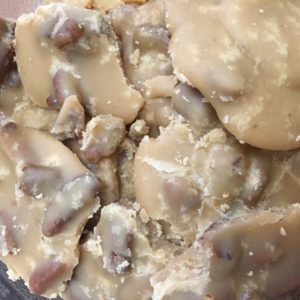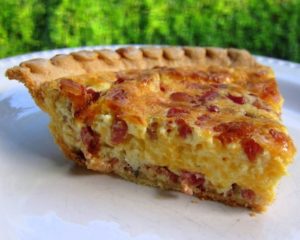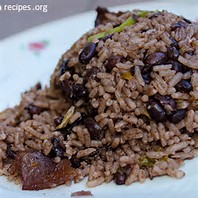 I did my presentation on my mom’s delicious tamales. Her tamales are really important to me because they were the first meal me and my mom cooked together. I was adopted at the age of 5. When I turned 18, I moved back with my biological mother. Before moving with her, I had only had her tamales one time. At that moment, they were the best things I had ever tasted. When I moved back with her it was only right that they were the first meal I requested.
I did my presentation on my mom’s delicious tamales. Her tamales are really important to me because they were the first meal me and my mom cooked together. I was adopted at the age of 5. When I turned 18, I moved back with my biological mother. Before moving with her, I had only had her tamales one time. At that moment, they were the best things I had ever tasted. When I moved back with her it was only right that they were the first meal I requested.
The tamales are wrapped in corn husks (ojas). My mom is very picky when choosing the perfect oja. She have thrown away whole bags because they were not to her liking. The ojas must be cleaned because they have traces of dirt and corn hair. My mom soaks them water for some time then rinses them off one by one. The preparation of the masa is pretty simple. My mom only buys her masa from Amapola. They have the best masa around. But to add more fluffiness, she adds seasoning and oil. She then mixes it with her hands until it is not as sticky.
Spreading the masa on the oja is probably the hardest part (at least for me). The first time I ever made tamales with my mom, she had to redo every one I did. She says that the masa has to be evenly distributed because it cooks better. And she likes when her tamales have proportioned masa and meat. There have been times when she overlooked my disproportioned tamales and cooked them so, I definitely understand why she expects the masa to be spread in a certain way.
The meat is a secret! I will say that it takes hours to cook. My mom usually puts the meat to cook early in the morning on a medium heat. When she used to make pork tamales it would take a whole day because pork takes much longer to cook than chicken. However, I do not eat pork so, she stopped cooking them completely. The only time she does cook them is when family members ask her for a large order during the holidays. When I used to eat pork, she would make the red tamales with chicken and the green tamales with pork. I did not bring any red tamales but they are my favorite. I prefer them over the green but they are not as spicy as I prefer.
When the meat is done, she begins putting it in the masa. She likes to put a lot of meat in her tamales. When it’s time to wrap them she makes sure that each end of the oja has masa so the tamale stay closed. She said she do not like cooking tamales without wrapping them in aluminum foil because they do not cook as good. When I first made tamales with her, I thought it was okay to wrap the aluminum foil any way. Again, I was wrong. My mom likes to roll each end of the aluminum foil at least three times to retain the heat.
Once they are prepped and ready to cook, my mom uses her large tamale pot to cook them. She places a steamer at the bottom of the pot and puts a few cups of water in the pot. The water can not touch the tamales or they will be extremely gooey. She usually cooks a pot of 20 tamale for about an hour and a half. The more she adds the more time they require. I am happy that I am the only daughter who has the recipe.
Here is the link to Amapolas yelp page.
https://www.yelp.com/biz/amapola-super-deli-and-market-los-angeles




 Quiche
Quiche